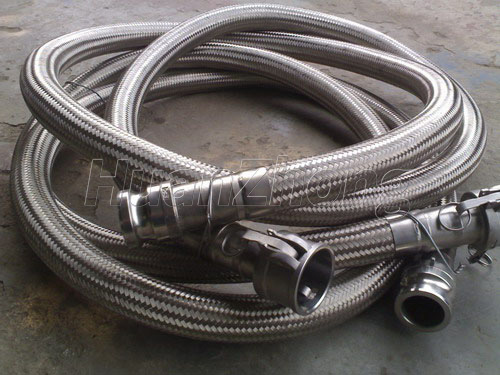Threaded bellows models and installation instructions.
Threaded bellows models and installation instructions. Threaded bellows, also known as threaded expansion joints, are flexible components used in piping systems to absorb axial movement, reduce vibration, and compensate for thermal expansion and contraction. They are constructed using metal bellows connected by threaded end connections. In this article, we will discuss the different models of threaded bellows and provide installation instructions.
Models of Threaded Bellows:
Threaded bellows come in various models to suit different application requirements. Some common models include:
Single Bellows: Single bellows models consist of a single metal bellows with threaded end connections. They are suitable for applications that require a limited range of axial movement and low pressure requirements. Single bellows models provide basic expansion and contraction capabilities.
Double Bellows: Double bellows models consist of two metal bellows connected by a threaded union in the middle. This design offers increased axial movement capability and greater flexibility. Double bellows models are commonly used in applications requiring higher axial movement and moderate pressure conditions.
Triple Bellows: Triple bellows models feature three metal bellows connected by threaded unions. This design provides even greater axial movement capability and enhanced flexibility. Triple bellows models are ideal for applications with significant axial movement requirements and high pressure conditions.
Installation Instructions for Threaded Bellows:
Proper installation of threaded bellows is crucial to ensure their effective operation and longevity. Follow these installation instructions:
Preparation: Before installation, thoroughly inspect the threaded bellows for any visible defects or damages. Ensure that the bellows are suitable for the intended application in terms of material, pressure rating, and temperature range. Check the alignment and parallelism of the pipeline connections where the bellows will be installed.
Alignment and Supports: Align the threaded bellows so that the overall length is in line with the pipeline. Adequate supports and guides must be provided to prevent excessive bending or twisting of the bellows during operation. Aligning the bellows ensures smooth movement and reduces stress on the pipeline.
Tightening the Connections: Begin by hand-tightening the threaded end connections to ensure proper alignment. Gradually use the appropriate wrenches to tighten the connections, ensuring that the force is evenly distributed. Avoid over-tightening, as it may lead to damage or stress concentration.
Alignment Verification: After tightening the connections, visually inspect the alignment to confirm that the bellows are properly aligned with the pipeline. Ensure that the bellows are not under compression or tension when the pipeline is in its normal position.
Leakage Check: Once the installation is complete, perform a leakage check by pressurizing the system to the maximum operating pressure. Inspect the threaded connections for any signs of leakage. If leaks are detected, adjust the connections accordingly or replace any damaged components.
Ongoing Maintenance: Regularly inspect the threaded bellows for signs of wear, corrosion, or fatigue. Perform routine maintenance tasks such as cleaning, lubrication, and inspection of the threaded connections. Promptly address any issues or damages to prolong the service life of the bellows.
In conclusion, threaded bellows are versatile components used in piping systems to accommodate axial movement, vibration, and thermal expansion. They are available in single, double, and triple bellows models to suit different application requirements. Proper installation, alignment, and maintenance are vital to ensure the effective functioning and durability of threaded bellows.
